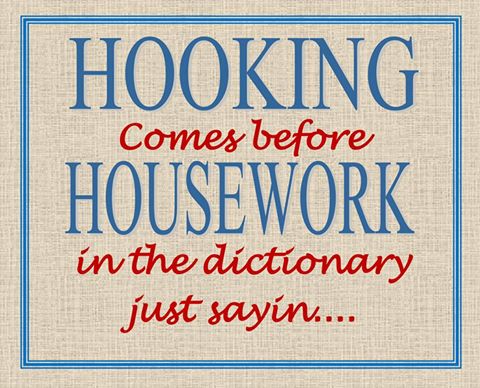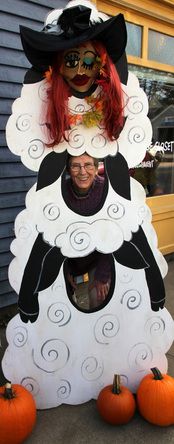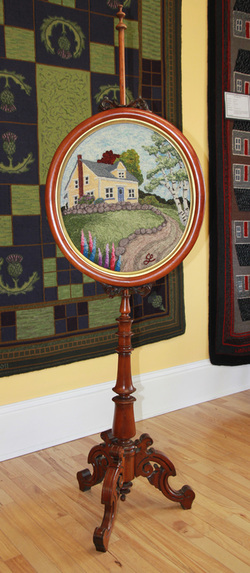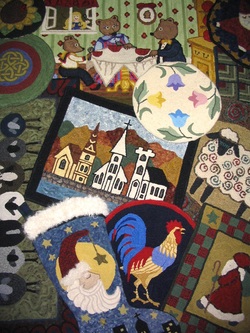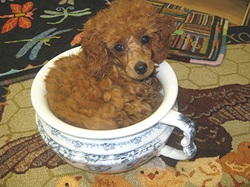 Her name was Mabel and her eyes are very sad.
Her name was Mabel and her eyes are very sad. A week before Christmas I ran into an old friend at the Kiwi Café in Chester. We'd dropped off the furry kids at the groomers and hubby and I always stop in for breakfast on the way home. I love the Kiwi Breakfast Burrito, full of goodness with egg, avocado and salsa, with a side order of crisp bacon. We had just finished our meal and were lingering over a second cup of coffee delaying going back out in the cold, when a woman walked in with an air of familiarity. I heard her voice as she spoke to the waitress and confirmed that it was Donna, a chum from my former life, back in my early twenties. I was mentioning her to hubby and before I could say hello she recognized me and said hi. I invited her to the table and we caught up on the decades since we'd drifted apart. A lot has happened in both of our lives, but it seemed comfortable and familiar like we had seen each other only yesterday. I mentioned I had looked at a few of their wedding pictures while rummaging through my photo box just a short while ago and she asked if I would mind giving them to her. I said I would gather them together and let her know when they were ready. That should be a simple task right?
Well that was weeks ago and short of any real excuse, all I can say is this trip down memory lane has many detours. Every picture tells a story and I find myself lingering over each one as the hours melt away. I’ve been working at digging out her wedding photos on three separate occasions and each time I get trapped in memory ville and can’t seem to break away.
Each picture needs to be examined thoroughly with my eyes and my thoughts. How I felt at that moment, the relationship of the subjects, what was the occasion that was noteworthy enough to want to freeze the image on a piece of paper. Sometimes the memories don’t come easy, there's gentle prodding of the grey cells to remember the occasion. So many of them, hundreds of pictures to organize, so many moments to explore.
While handling the photos, a realization struck me, how great it is to hold the image in my hands, have something tangible when today all we do is download them to a computer or phone and view them on a screen where they are pretty much forgotten quickly. We take so many pictures now they no longer hold the value like photographs of yesteryear. Shots of every mundane moment, hundreds of one action. Digital photography is only for the now, pictures are taken, looked at and then are buried in files. I wonder, will the relatives of tomorrow sit at a computer and rummage through our photos of today? Probably not. For starters, technology will continue to advance and the systems available now will be obsolete. Unless our photos are printed on paper there will be no lasting image to prove we were once here, we will be a name only to our descendents. God forbid a virus attacks and deletes all our memories, we’d have nothing to document our existence and be as little as one generation away from being forgotten.
I love looking at the photographs of distant relatives. I don’t know who they are and there is no one left to identify them. Some have pencil scribbles on the back with just a first name or a date but that means nothing to me. Some of the faces staring at the camera look pretty scary, probably conditioning from living difficult lives and no modern convenience to soften the chores of everyday life. Farmers and lumberjacks and the occasional fisherman, hard labour jobs that weather the face and hands and toughen the constitution.
Women have stern faces and piercing eyes, probably weary from rearing many children and then maintaining their needs. Waking before dawn to begin the daily process of food preparation, washing and household duties. Working in the bitter cold until the morning fire warms the hearth, kneading bread and tending to babies. I pause at these pictures and make up little stories about their lives, wonder if there was happiness in their marriages, if there was kindness. It’s difficult to tell by their expressions, their lack of contact, the man standing behind the seated woman somehow seems cold but sometimes there is touching, his hand on her shoulder, giving hope there was some intimacy other then procreation. The turn of the century photographer had his work cut out for him. Smiles must have been frowned upon. No smiling babies either, just bisque skinned dolls with coloured in rosy cheeks, eyes staring off into the distance. So I’m curious, why no smiles and this is what I found when I Googled it.
First off, it has been dismissed that people of old refused to smile because their teeth were rotting. It wasn’t that people didn’t have bad teeth, as dental hygiene really was awful, but rather that bad teeth were so common that seeing them did not take away from a person’s attractiveness at the time. One of the main reasons people didn’t smile was how it was perceived centuries ago. Although nowadays we think of smiles as being indicative of happiness, humor, and warmth, they apparently had a very different meaning back in the day. By the 17th century in Europe it was a well-established fact that the only people who smiled broadly, in life and in art, were the poor, the lewd, the drunk, the innocent, and the entertainment. So to be perceived as upper class and as a person of good character they didn’t smile. For this reason, both the creators and the sitters of portraits had good reason to keep the smiles out of the resulting images, which explains why we don’t see photos of famous figures donning a grin in their official portraits. For instance, Abraham Lincoln, although known for his humorous personality during his time, is now remembered more by the extremely serious expressions he chose to wear during official portrait sessions.
Mark Twain was quite a funny guy as well, but he hardly let any of that show in his portrait photographs. He wrote: “A photograph is a most important document, and there is nothing more damning to go down to posterity than a silly, foolish smile caught and fixed forever.”
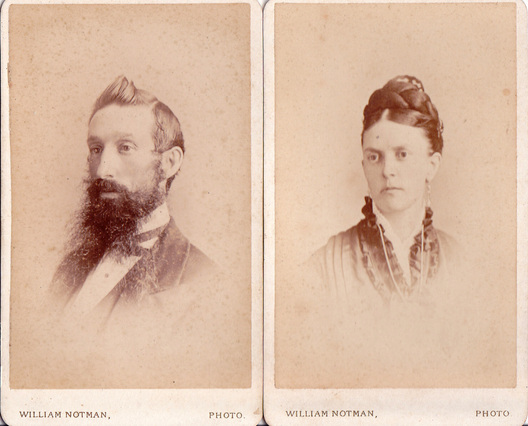
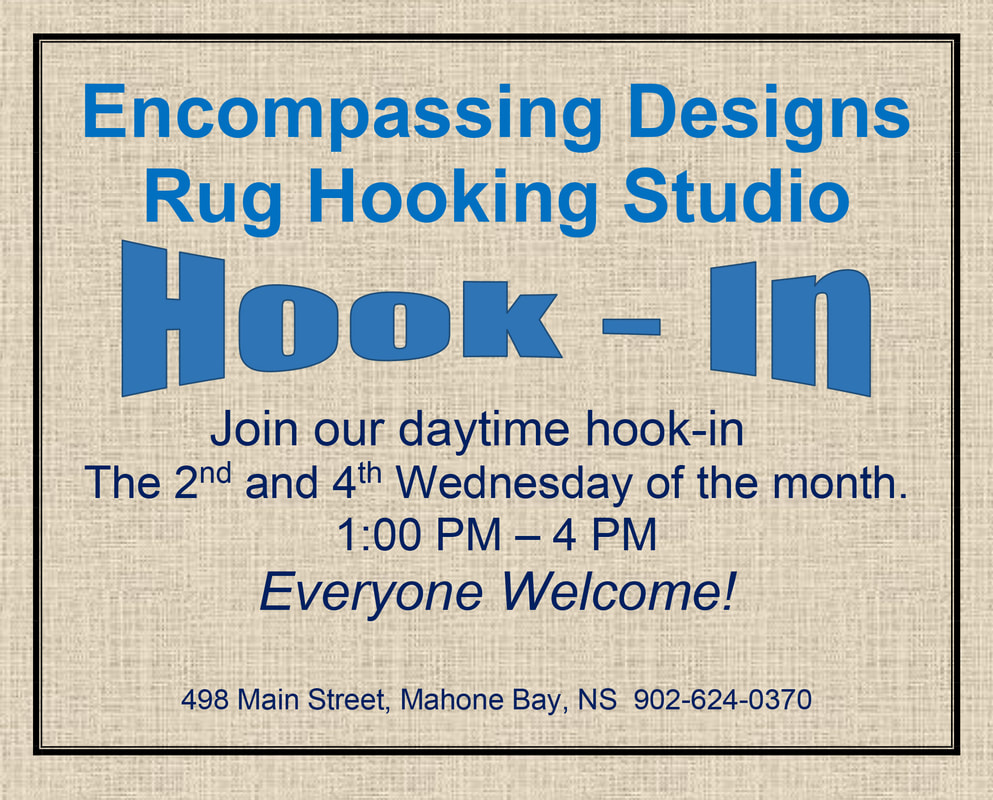



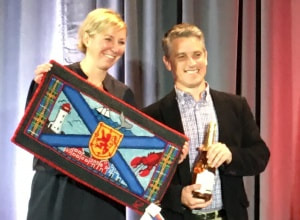
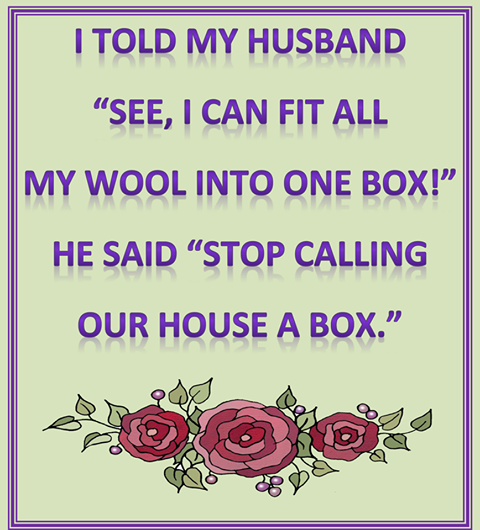

 RSS Feed
RSS Feed
